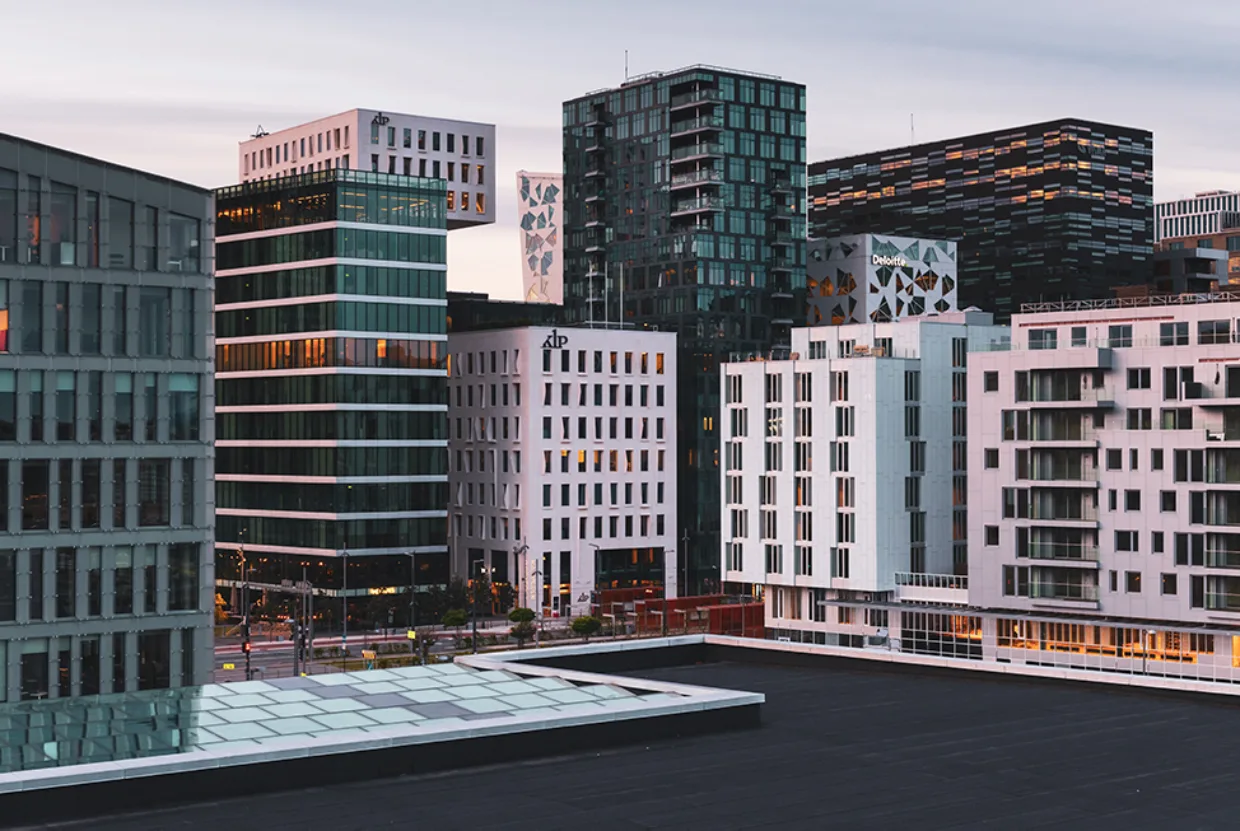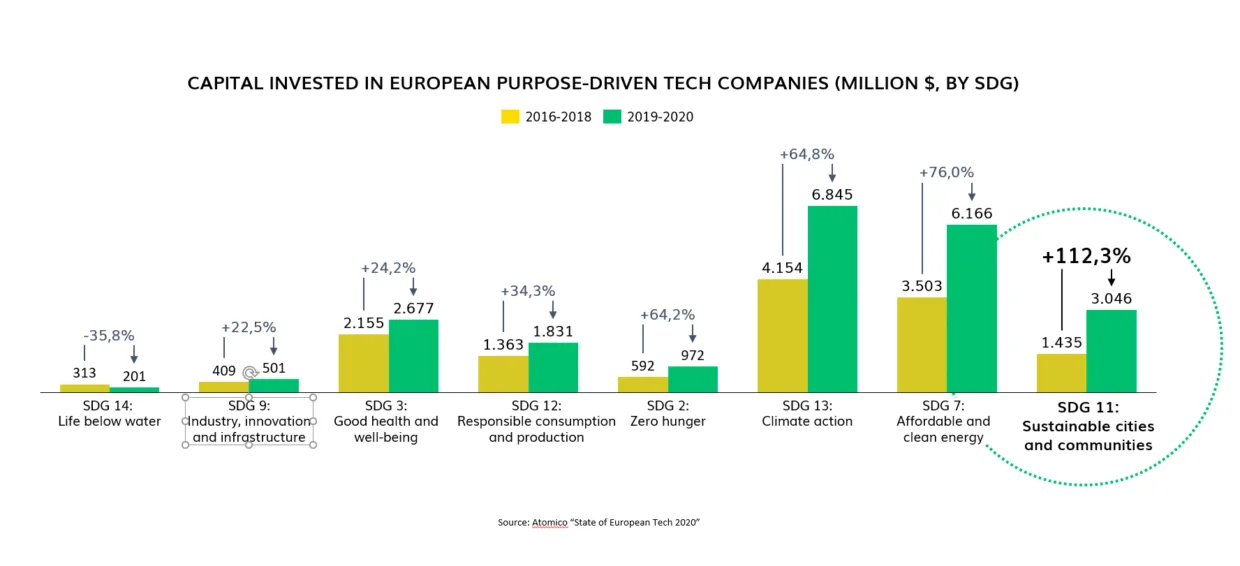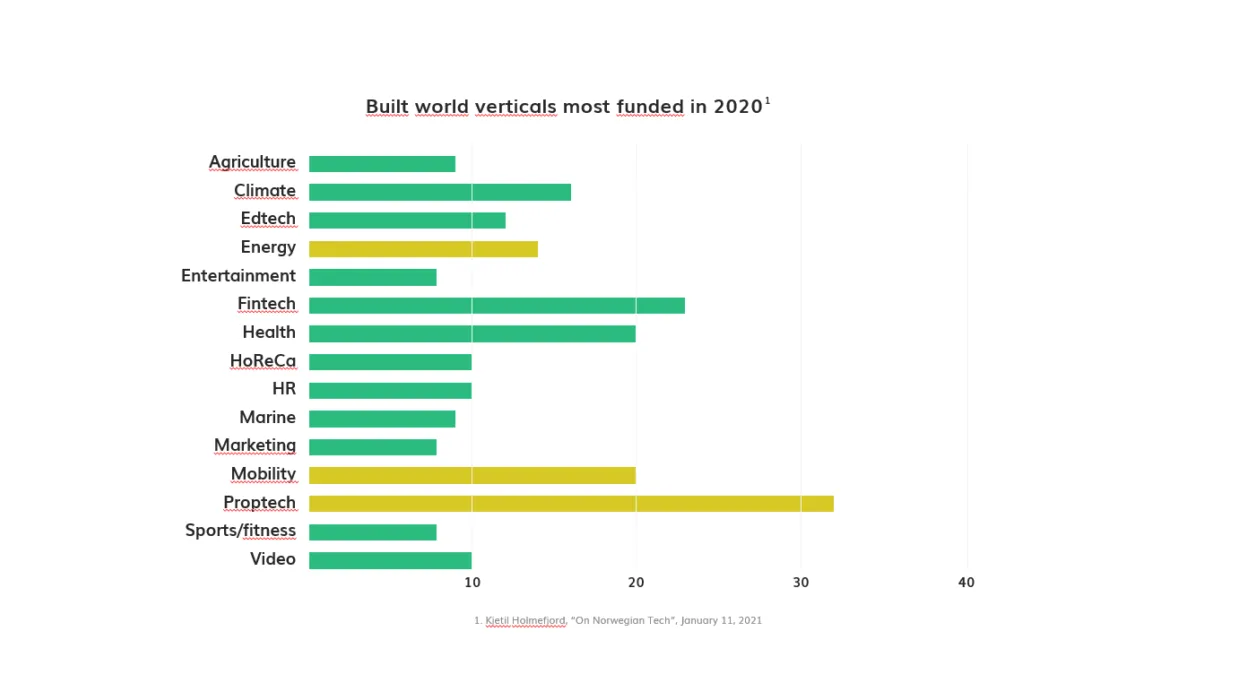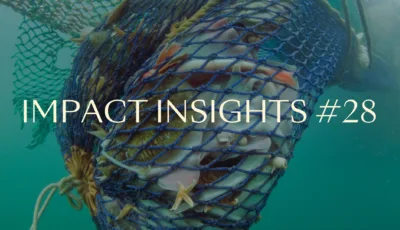Proptech: solving the sustainability puzzle

Reducing the footprint in one of the world’s least digitized and most resource-intensive industries is an urgent matter. Fortunately, new technologies are helping establish new business models boosting productivity while utilizing limited resources, further backed by rocketing investments into the built world.

Low-digitized industries lag behind on productivity
Technology is rapidly changing our industries, societies, and markets. At the same time, the threat to our planet is growing by the minute.
The need for change is greatest in resource-intensive and low-digitized industries. Examples include agriculture, construction and real estate, where these factors also impact the productivity growth rate negatively. Altogether, this is bad news for our planet; we use too many resources compared to what we create. But as seen in other industries, technology can help establish business models that boost productivity, while ensuring that we utilize our scarce natural resources in a far more sustainable way.
The 40% industry
The construction and real estate industries are commonly referred to as “The 40% industry”. Accounting for nearly 40% of global energy consumption, 40% of global CO2 emissions and using 40% of global resources, they represent one of the world’s most polluting and resource intensive economic activities.
Luckily, sustainability is gaining awareness within the industry - both out of front runners’ desire to rethink how their businesses affect our planet and out of bare necessity due to regulatory demands and restrictions. New technologies enable forward-leaning companies to drive high-paced change and effectively contribute to reducing the industry’s environmental footprint.
A roadmap for sustainable development
At the heart of The 2030 Agenda are the 17 Sustainable Development Goals (SDGs). Sustainability Goal 11 is maybe the most directional for players within construction and property, as well as related industries such as mobility and circularity. The underlying targets outline several clear objectives that these industries can influence directly:
- Ensure access for all to adequate, safe and affordable housing.
- Provide safe, affordable, accessible and sustainable transport systems.
- Safeguard critical infrastructure
- Improve resource- and energy efficiency
- Improve waste management
- Reduce air pollution
- Enhance inclusive and sustainable urbanization
Built world investments skyrocket
As the Sustainable Development Goals have gained momentum, investments are also shifting towards companies that contribute to a more sustainable future.
If we look at capital invested in purpose-driven tech companies in Europe over the past decade, we see a very favourable trend for tech-companies working towards SDG11. Both speed and size of investments are increasing at a record pace (see chart. Source: Atomico - State of European Tech 2020).

Globally, proptech investments in general rocketed in 2020, reaching a record of 23.8 billion in venture capital investments. Within circularity, which is also closely tied to the built environment, innovations are estimated to yield up to USD 4.5 trillion in economic benefits by 2030, while solving crucial environmental challenges.
Proptech tops the list
If we zoom in on Norway more specifically, we also find a thriving startup ecosystem surrounding these growing industries.
In 2020, Proptech was the largest industry in terms of startup funding, as the chart below shows. Related verticals, such as Mobility and Energy follow close behind, witnessing a record high activity within built environment-related tech.

At the same time, the Norwegian startup ecosystem is maturing, with an increasing number of IPOs and growth rounds. Companies like AirThings, Tibber, Spacemaker, Otovo, Disruptive Technologies and ZEG Power are examples of Norwegian companies raising growth capital and showing potential of becoming significant, global players within their respective niches.
Alongside a promising global picture, this is an indication that investments in these industries will provide solid returns for investors in the coming years, alongside a positive effect on these industries’ environmental footprint.
Changing the built world, one startup at the time
At Norselab, we aim to contribute to a sustainable future by investing in technology companies within resource intensive industries, where there is potential to create large-scale meaningful change. We have already invested in several high-potential tech startups and scaleups within the built world, and more will follow as we complete our Fund’s portfolio.
Let me introduce you to two of them, Varig and WasteIQ, that both provide an excellent entry gate to both digitization and sustainability for property businesses. Their solutions are designed to help gain overview and control of the environmental footprint of buildings. Through the data they collect, they generate insights to enable owners, tenants and property managers to understand how they should act to improve environmental performance.
Varig collects data to provide a precise overview of a building’s or portfolio’s total environmental footprint. Performance related to waste, water and energy is made available to the user, showing improvement potential and enabling concrete actions. Their software also automates sustainability reporting on a monthly, quarterly or annual basis.
WasteIQ’s solution collects data about where, when and what type of waste is disposed, generating insights about resources available for reuse, repurposing and recycling. Waste management companies, malls, commercial property and residential properties can use these insights to create incentives - such as performance-based fees - designed to reduce waste and increase the sorting rate.
Both these startups showcase solutions that the real estate industry will require to achieve the radical improvements outlined in the 2030 Agenda. There is no time to lose. Whereas the term “sustainability” has been heavily diluted over these past few years, it’s about to shape up again.
Getting serious about sustainability
As the new EU taxonomy is coming into effect, there will be no room for approximations or window-dressing anymore. As part of the EU’s strategy to make Europe the first climate-neutral region by 2050, the EU taxonomy is designed to channel investments into green solutions, combating greenwashing and facilitating the comparison of activities. It’s based on a series of technical screening criteria that define whether an economic activity can be defined as sustainable or not.
This means that the real estate industry will need reliable data. We need it for classifying our companies’ activities, but most of all; we need them to efficiently improve environmental performance.
Where to start?
For property players who wish to lean in and act efficiently on their challenges, Varig and WasteIQ, that we presented earlier, both offer a great place to start, thanks to 3 key features:
- They are based on open systems that can exchange data and information with other systems and data sources, avoiding acquisition of expensive equipment or legacy systems.
- Any business can start using it, independently of how digitized the company is beforehand. Also, they will collect and/or integrate with the systems you are already using, whether they are analog or digital.
- They help concretely map out the current status and enable prioritization of actions or changes based on data-driven insights.
Proptech and other technologies designed for the built world are booming as investors get behind the impact potential they offer. The thriving startup ecosystem surrounding the real estate industry will be crucial in solving a three-fold, intimately interconnected challenge: digitization, sustainability, productivity.


